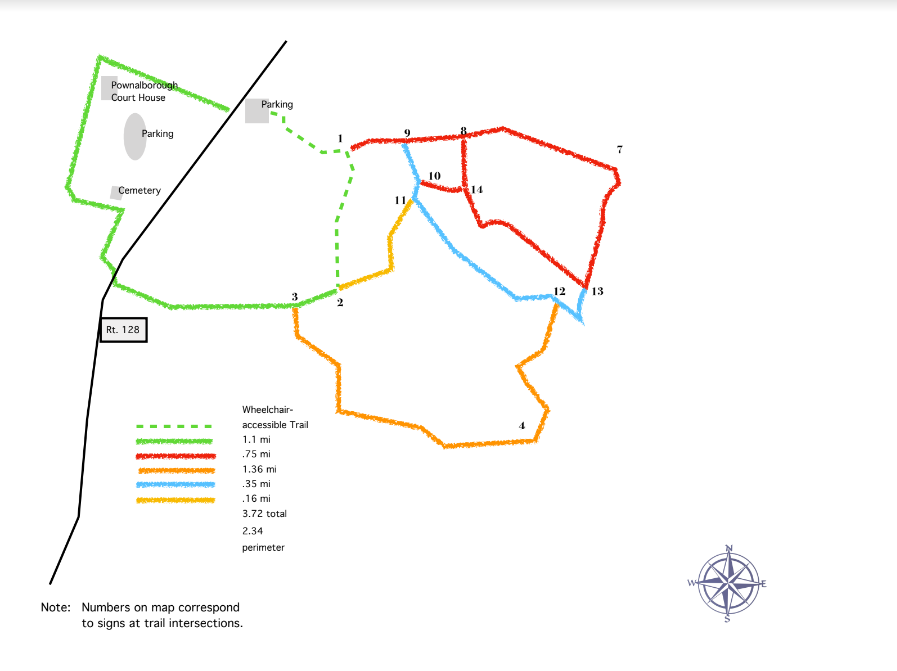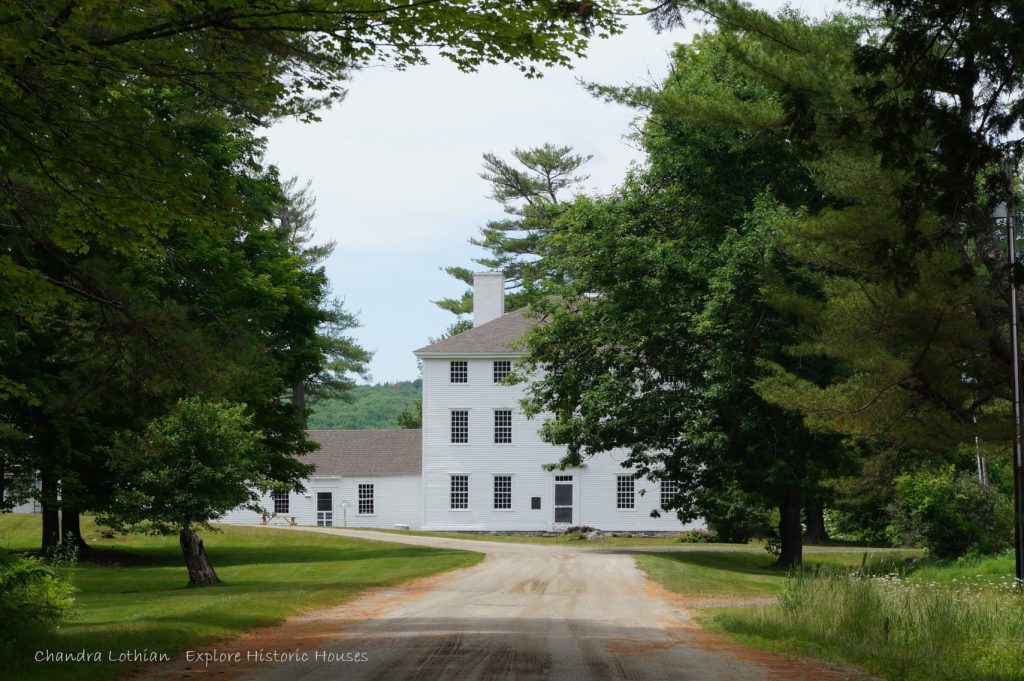The Trails at Pownalborough Court House

Directly across the road (ME Rt. 128) from the Pownalborough Court House, 150 acres of woods are home to over three miles of trails including a 1500’ accessible trail leading from a parking area.
The trails provide a beautiful and walkable system that includes ravines with dells and unusually tall old trees. Located on the western flank of the ridge that divides the Eastern and Kennebec Rivers, the system contains a number of unique features that make it an appealing and distinctive destination. Much of the trail system traverses a mostly mature woodland comprised principally of white pine and groves of eastern hemlock that follows a route overlooking a stream and fern meadows.
The system contains many loop trails with varying terrain and a number of options for hiking distance.
The trails at Pownalborough Court House are meant for walking, hiking, snowshoeing, and cross-country skiing only. No bicycles, horses, or motorized vehicles are allowed.

The land on which the Pownalborough Court House & trails are located was the traditional home to Wabanaki people since time immemorial. By 1758, however, they were forced out after years of violent conflict and disease brought by European colonists. Despite this forced removal, the Wabanaki are not a relic of the past. They continue to live in Maine today where they hold fast to their cultural identity, languages, and self-determination.
Designed by Boston architect Gershom Flagg and built in 1761 by the Kennebec Proprietors for the newly created Lincoln County, the Pownalborough Court House received such notable visitors as John Adams, Robert Treat Paine, William Cushing, Reverend Jacob Bailey, and two future Massachusetts governors, David Sewall and James Sullivan.
The Court House also served as a tavern, a place for church services, a dance school, and the Dresden Post Office from 1807-1855. In addition to its vital role in the legal history of Lincoln County and Maine, the Court House was a family home. Capt. Samuel Goodwin, an original Kennebec Proprietor and captain of the guard at Fort Shirley, moved his family into the Court House in 1761 and his descendants lived in the building until 1954.


 Newsletter
Newsletter Join LCHA
Join LCHA Donate Now
Donate Now